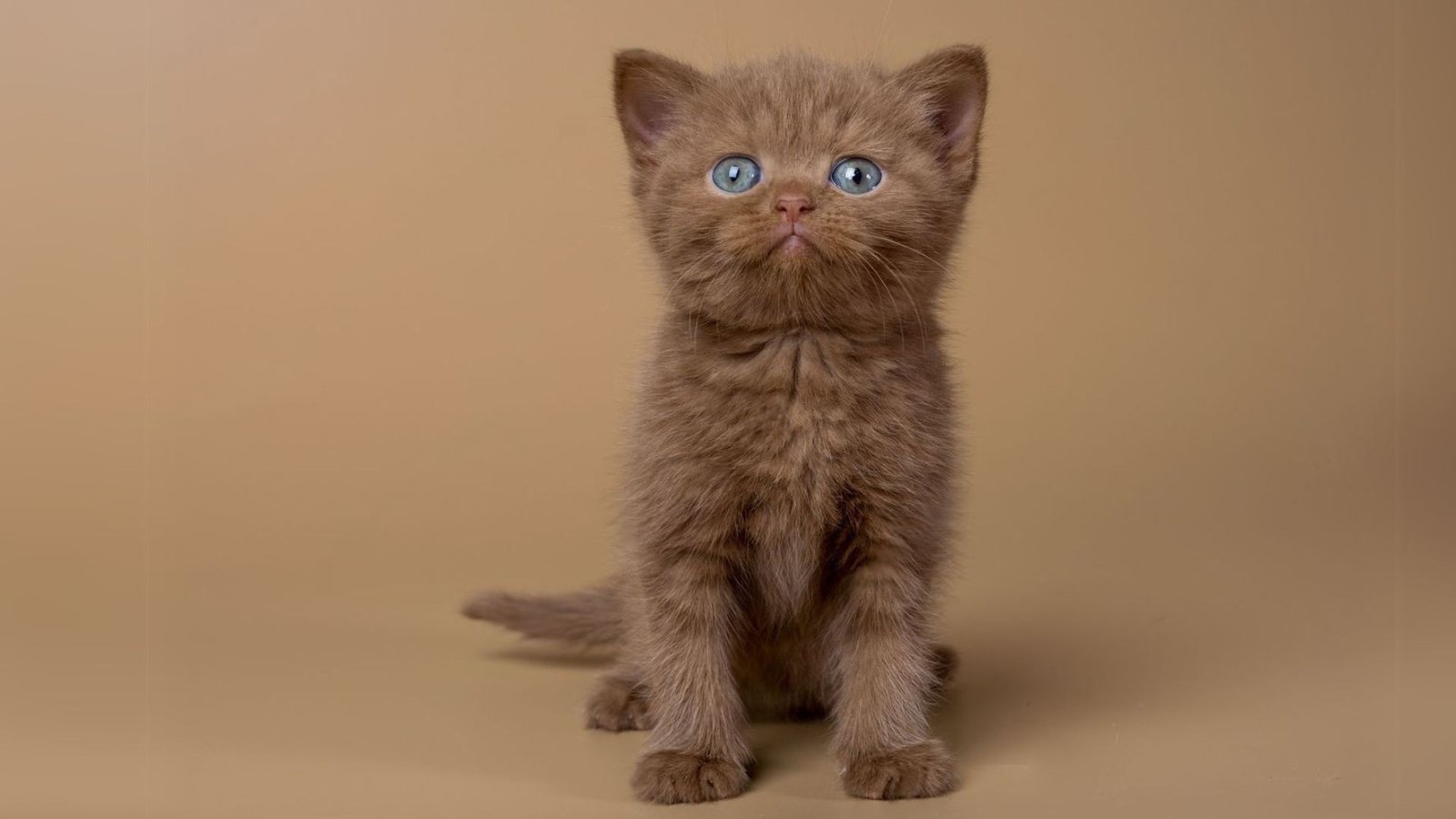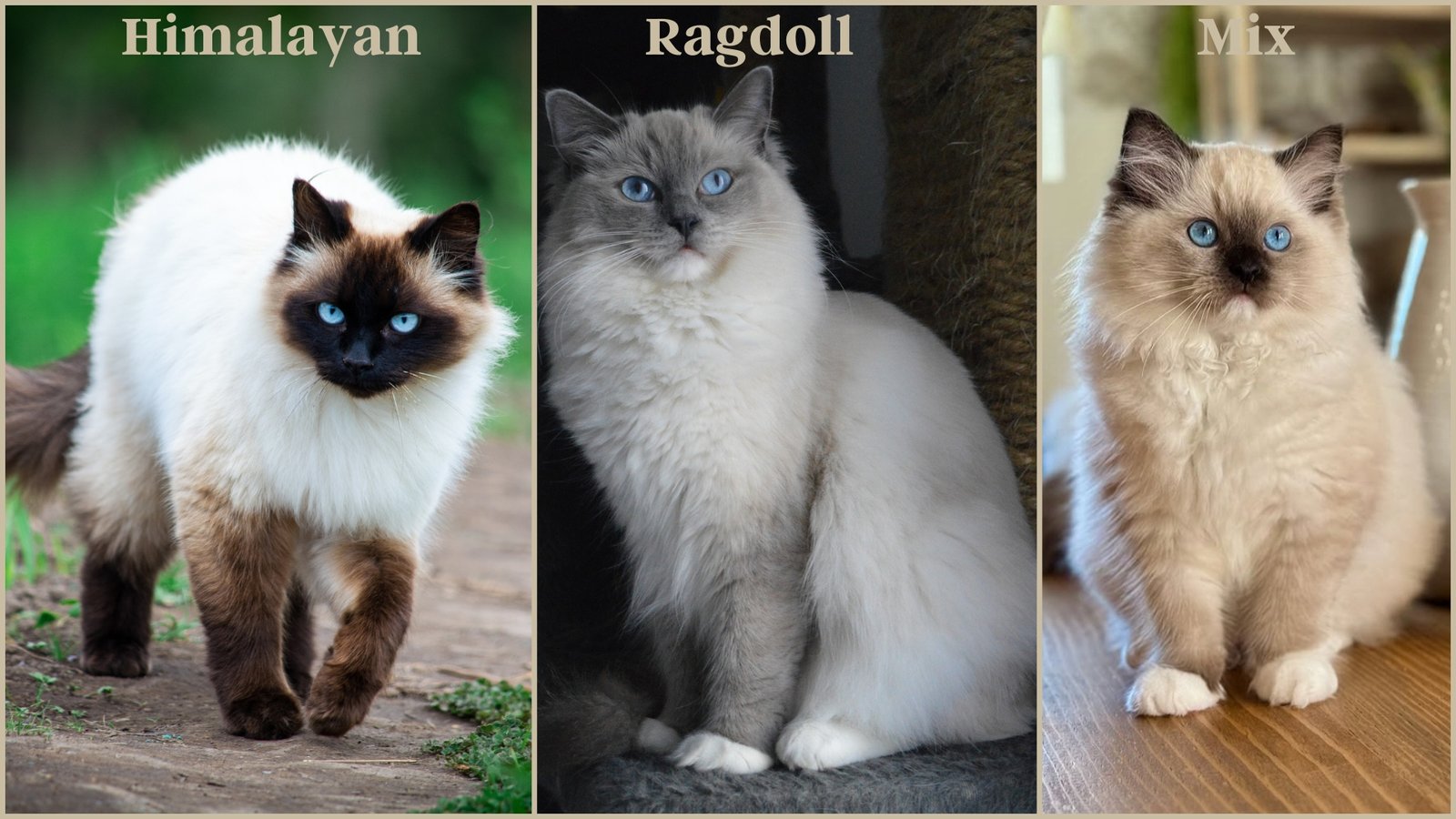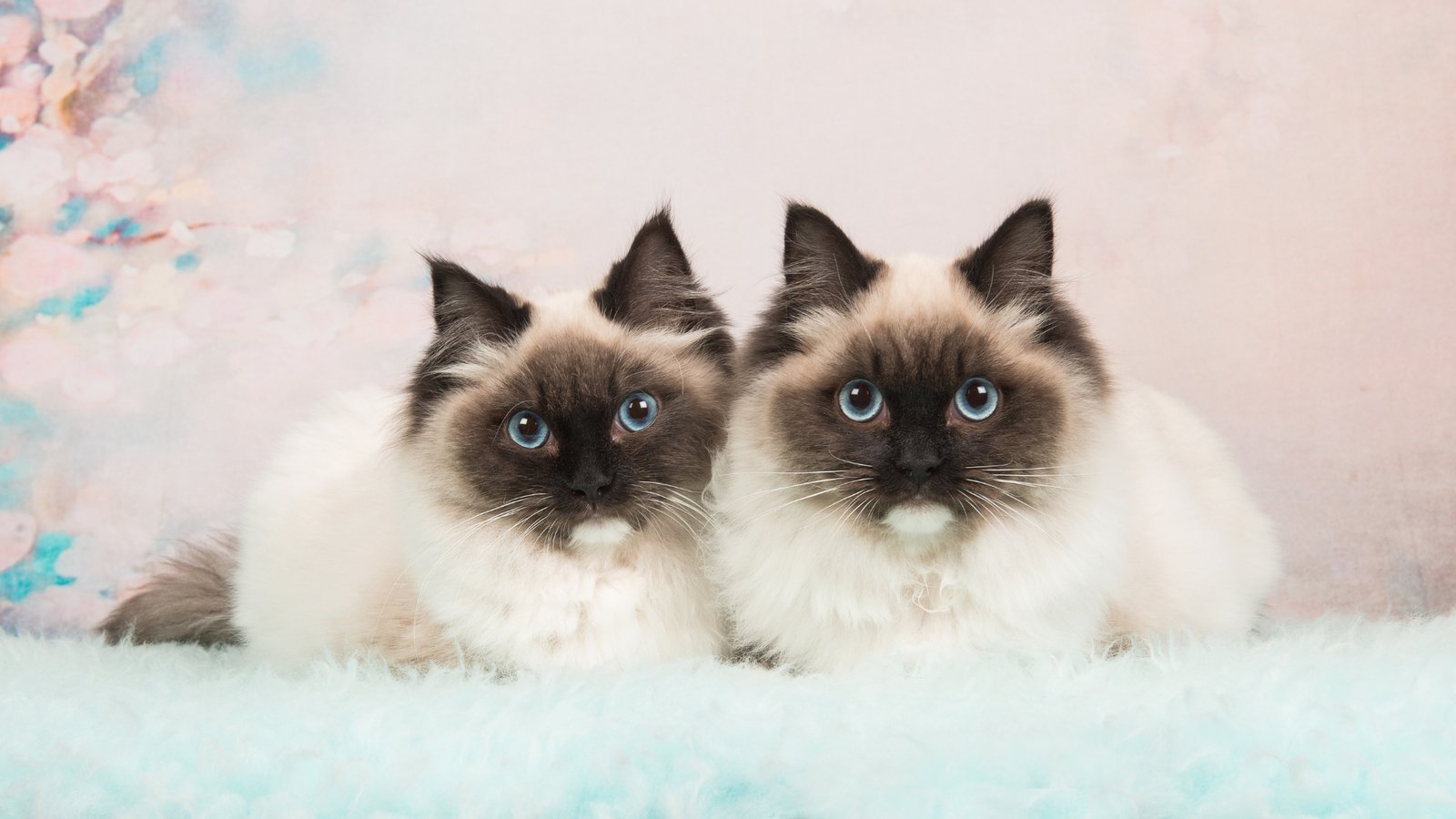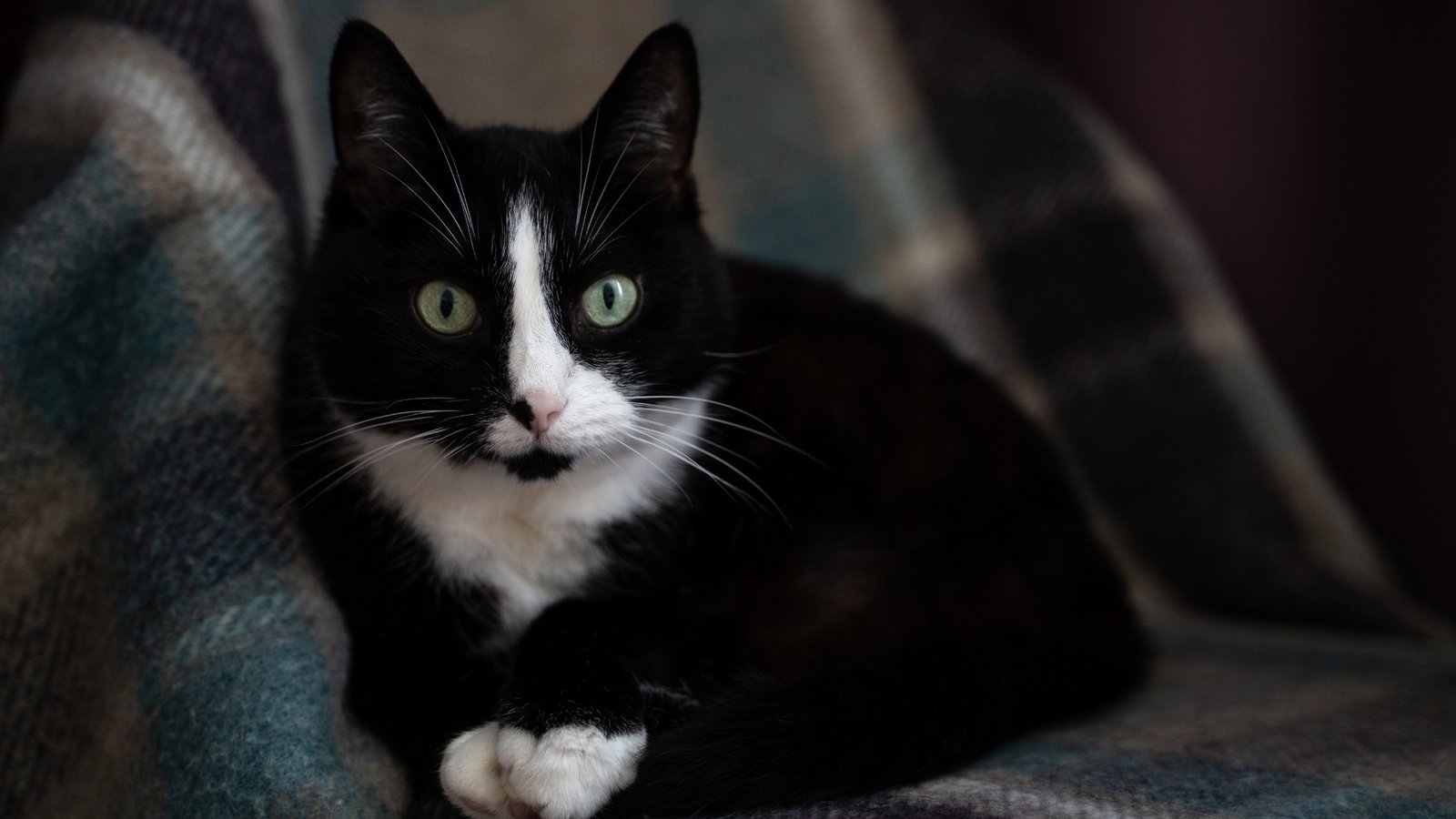The cinnamon ragdoll cat has made its way into the hearts of cat fanatics all over the world, and it’s easy to see why. They’ve got soft fur, Aqua eyes, and a laid-back personality that would make anyone fall in love (and so did we).
Cinnamon ragdoll is a diluted version of the chocolate ragdoll, and to that end, is sometimes casually referred to as a brown ragdoll cat. Except for TICA, most feline registration authorities didn’t recognize cinnamon ragdolls as a pedigree ragdoll color or pattern.
Keep scrolling and get to know everything about cinnamon ragdoll cats, how rare they’re, their cost, genetics, and how to care for one when bringing it home.
Cinnamon Ragdoll Cat Breed Overview

Cinnamon Ragdoll Cat Characteristics
- A cinnamon ragdoll kittens start off pure white, similar to standard pointed ragdolls, though. As they grow up, the warm reddish brown color emerges on the extremities (snout, ears, paws, and tail).
- This spicy or rusty tan shade begins to come out when they’re around two weeks old, and their body temperature regulates the colors. As you move down the body, you’ll see a very warm ivory or pale fawn tone all around their chest, belly, legs, saddle, and shoulders.
- Their ring-like tail coloration is darker with an even darker tip near the end. We even heard that some people have confused the reddish-brown cinnamon tone with soft caramel or burnt orange! That’s not true, since as a diluted version of chocolate ragdoll cats, they carry a soft, earthy tone that appears lighter and warmer than traditional browns or blacks.
- Cinnamon ragdolls could come in all three (colorpoint, mitted, and bicolor) patterns, though they seem to be more of a rarity among mitted and bicolor colorations.
- Blue is the most common eye color in all registered ragdolls and their subsets. However, in the case of a cinnamon ragdoll cat, you might find either golden, green, or aqua color eyes.
The Origins Of The Cinnamon Ragdoll Cat
Unlike the pedigree ragdoll breed, Cinnamon ragdoll cats don’t have a defined history or trace back to a single breeder. Rather, it came from a careful genetic match outside the original foundation lines of the purebred ragdoll cat breed.
After spending a fair amount of time searching through the web, we uncovered significant contributions made by Dr Maxine Stiles of Dollnouveau Ragdolls and Sharon Steadman of Lattedolls Ragdolls in bringing the rare Cinnamon gene into the Ragdoll breed.
These floppy kittes are often referred to as “non-traditional” or “new color Ragdolls”. Over and above, though, they are accepted by TICA under the broader “Cherubim” category. Still, they’re not recognized by CFA to take part in the competition since they’re and always were stuck to the original, pointed, blue-eyed standards.
To wrap this up, there is no single person credited with “creating” the Cinnamon Ragdoll cat. They came much later (after the ragdoll cat creation by Ann Baker) through selective breeding by Ragdoll enthusiasts and experimental breeders. By using carefully chosen outcrosses, they managed to bring this unique shade into the pedigree line.
Cinnamon Ragdoll Cat Genetics & Rarity
You might be thinking of what makes cinnamon cat ragdoll rare and why most ragdoll breeders won’t crossbreed it. The truth is, this unique coat color results from a mutation of the gene found in the B locus.
The allelic group includes black (seal) marked as B, chocolate marked as b, and cinnamon marked as b’. Black is dominant over chocolate, and chocolate is dominant over cinnamon. That means cinnamon is recessive to both.
- Black (B) → Chocolate (b) → Cinnamon (b’)
The only way to produce a cinnamon Ragdoll kitten is when both parents inherit two copies of the recessive cinnamon gene (b’b’). If the offspring gets even one dominant black gene (B) from a parent, it turns black (BB, Bb, or Bb’) regardless of what comes from the other side.
Likewise, one or two copies of the chocolate gene (bb or bb’) yield chocolate instead of cinnamon. To bring out a true cinnamon point Ragdoll, both parents must either carry the cinnamon gene or have it as their genetic makeup to pass it down.
When both male and female felines carry cinnamon, the result can be a soft reddish coat with warm points and the rare look of a brown cinnamon Ragdoll. This selective breeding process also explains why these raggies are still considered rare and took you such effort to find. It takes time and a whole bunch of planning to breed two ragdolls with the cinnamon gene together.
Cinnamon Ragdoll Cat Personality & Temperament
If you’ve already had experience with either chocolate, blue bicolor, or mink ragdolls, you will notice zero to no difference in personality and temperament. Cinnamon ragdoll kittens live up to their “floppy” reputation and would love to go limp when you pick them up.
With a docile personality and laid-back temperament, the ragdoll cinnamon cat is a real pleasure to have around. They get along extremely well with kiddos jumping off of couches and are more than happy to be held, cuddled, or carried around all day long.
One thing we wanna clarify is that, although these kittes aren’t made out to be all the way dependent, they do need your love to thrive. It’s healthy to leave them alone for no more than 8 hours a day, since this could stress your cinnamon ragdoll cat out.
Where to Find a Cinnamon Ragdoll Cat & Its Cost?
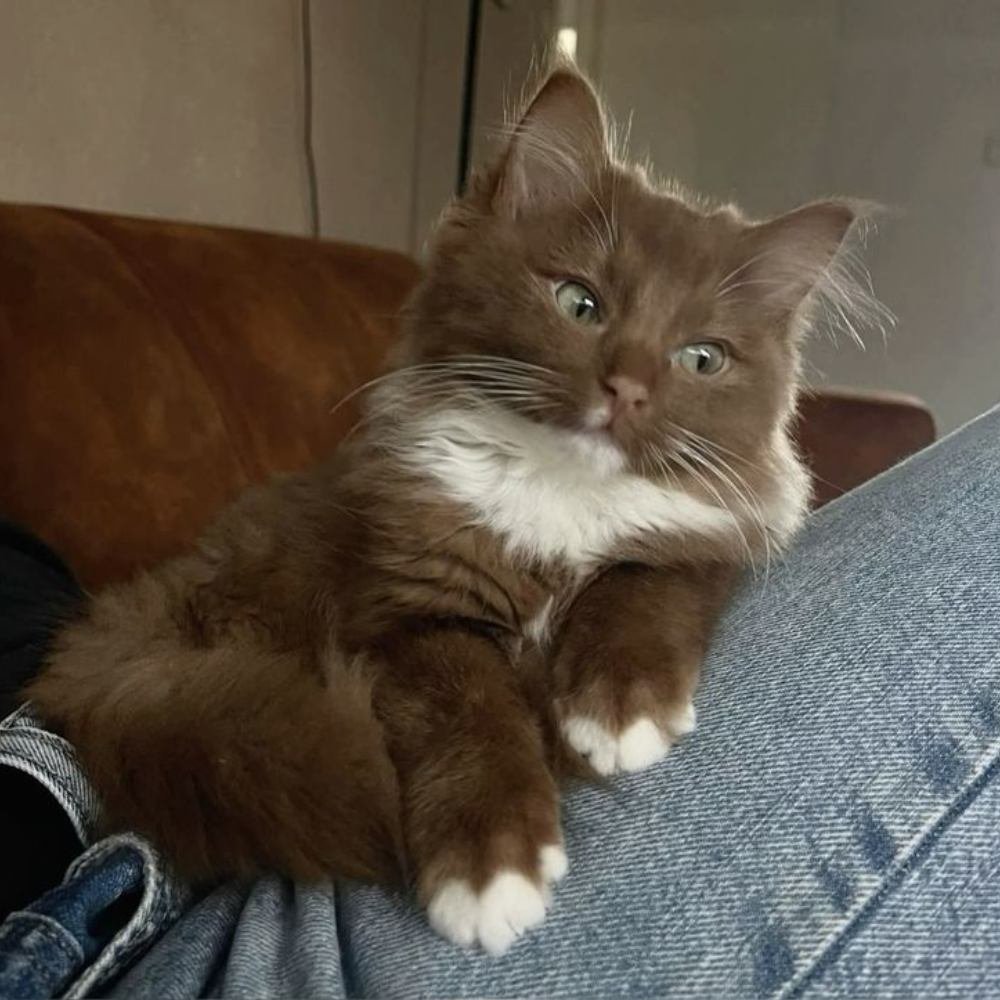
The cinnamon Ragdoll color is rare and requires two recessive genes, one from each parent, to produce warm reddish brown offspring. This makes it scarcer in comparison to traditional ragdolls. At the same time, their rarity means you could easily get scammed if you’re not careful or cautious.
Kick off your search by typing “cinnamon Ragdoll cat near me” or “cinnamon Ragdoll cat for sale” in your preferred search engine (BING or Google). Skip the wild goose chase and go straight to trusted breeders registered with reputable organizations.
Their cost could vary from location to location, though. Expect to pay somewhere between $3000 to $5000 for a pedigree cinnamon Ragdoll cat. To help you look over options, we’ve attached a list of official TICA breeders. Put your location in their database and filter out results to find breeders near you.
What Things Do You Need To Know When Owning a Cinnamon Ragdoll Cat
Feeding
Cinnamon Ragdoll cats have a sturdy build that might trick you into offering big meal portions. It’s true they need extra calories than short cat breeds, though the diet should be balanced. They aren’t highly active so keep feeding under control with protein-rich cat food split into measured meals. If you go out to work, feed them and don’t leave food out all day. A little discipline goes a long way to keep feeding under control. We’ve written a complete guide on ragdoll cat food and feeding recommendations. Check it out here.
Recommended Read: Best Cat Food For Ragdoll Cats
Coat Care
Their fur feels soft as a cloud. Cinnamon Ragdolls groom themselves for the most part, but those long hairs need extra love. Comb their coat twice or thrice a week to cut out matting and knots. Since they don’t have an undercoat, a careful comb or brush works just fine that avoiding tugging. As an indoor cat, they’re less likely to encounter fleas and ticks aren’t much of a concern. Turns out, you really only need to bathe them when it’s absolutely necessary. And when it does, make sure to use cat friendly shampoo.
Recommended Read: How To Brush Your Ragdoll Cat
Health Care
If you’ve cared for your cinnamon raggie well enough, meaning you did take her to a vet very so often and had her shots done, you should be in the clear. Ideally, these dog-like felines are sturdy against illnesses. Two common health concerns you should be aware of are polycystic kidney disease (PKD) and hypertrophic cardiomyopathy (HCM). Visit your veterinarian at least once a year for a physical exam to stay on top of any concerns.
Playtime & Exercise Requirements
Cinnamon Ragdolls love to stay indoors. They remain quiet most days, happy to lounge around. Every now and then, they surprise you with zoomies and run playfully around. Solid cinnamon Ragdolls, chocolate cinnamon Ragdoll cats—whatever you like to casually call them, these adorable furballs are all about short bursts of playtime followed by long, lazy naps. They’re not fast or agile, so gentle fun suits them best. Having cat toys to play with keeps their minds sharp. Simple things like a feather wand or a puzzle ball bring out their curious side.
Does a Cinnamon Ragdoll Kitten Make a Good Pet?
It absolutely does make an incredible pet. These rare treasures might take some effort to find out in your area. But once you bring one into your home, everything changes. You’ll meet a sweet friend who loves to sit on your lap and cuddle close. Their brief bursts of kitten-like activity spark pure delight. Then their gentle, calm washes over you like a warm hug. Cinnamon Ragdoll Kittens don’t just live with you. They weave themselves into your family with every soft purr.
Wrapping Up…
The cinnamon ragdoll cat is a diluted version of the chocolate ragdoll and can only be produced when both parents inherit two copies of the recessive cinnamon gene (b’b’). Their warm reddish brown coat color looks adorable and matches their sweet, affectionate personality. Except for TICA, unfortunately, other big feline registration authorities didn’t accept cinnamon ragdoll cats. That thing shouldn’t put you off, though. If cat shows aren’t your thing, a cinnamon ragdoll might just be the purr-fect low-key companion for you. With their docile and charming nature, they will make a perfect companion to share your life with.
Written By: Usman Malik | Reviewed By: Ali Abbas | Fact Checked By: Aqib Zulfiqar



